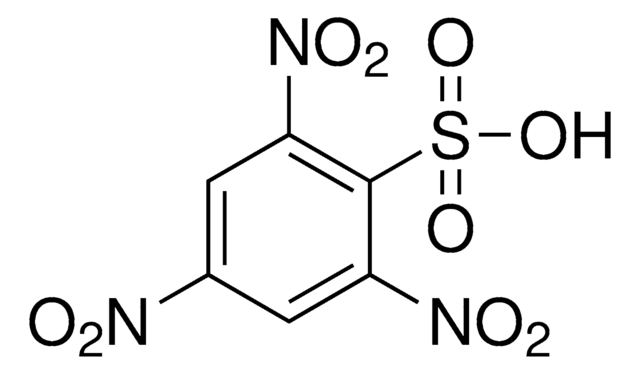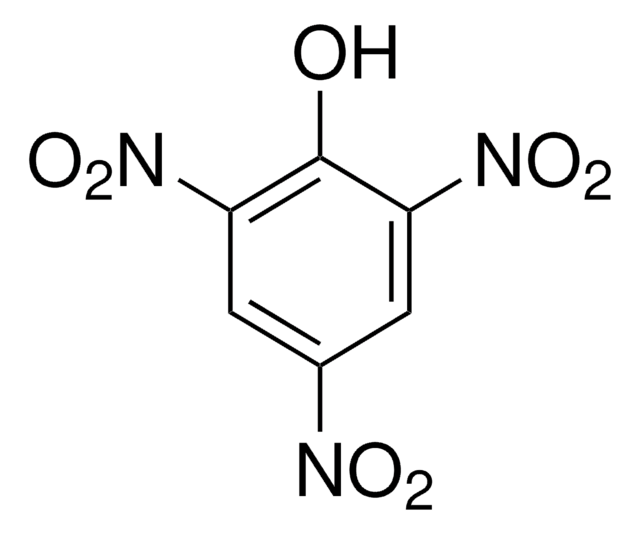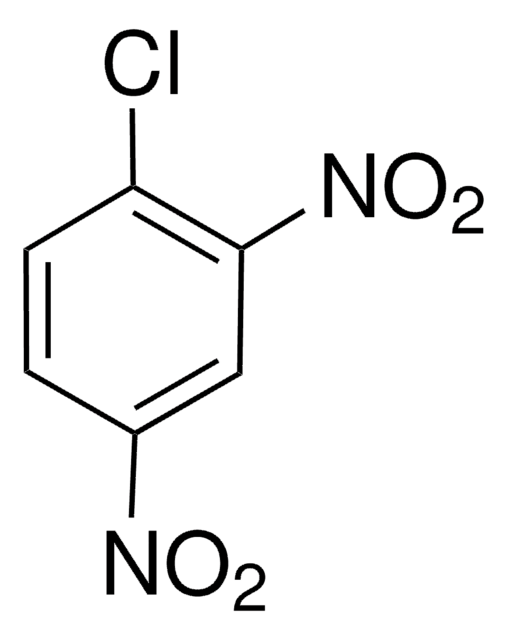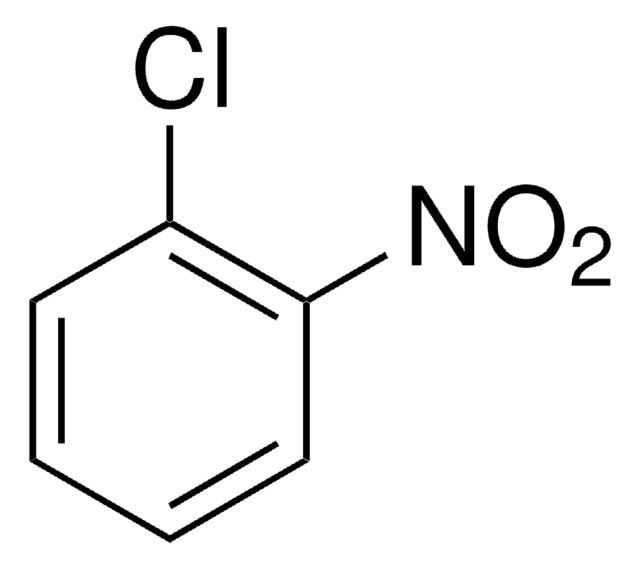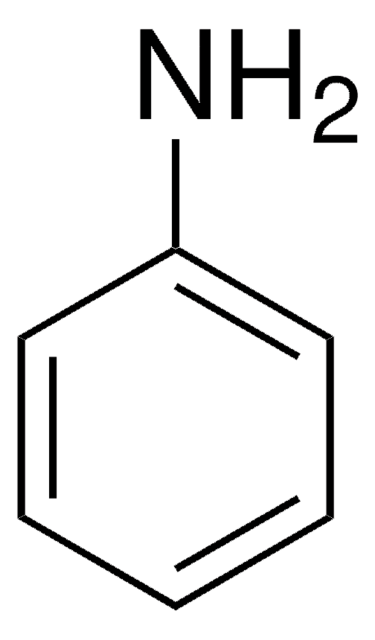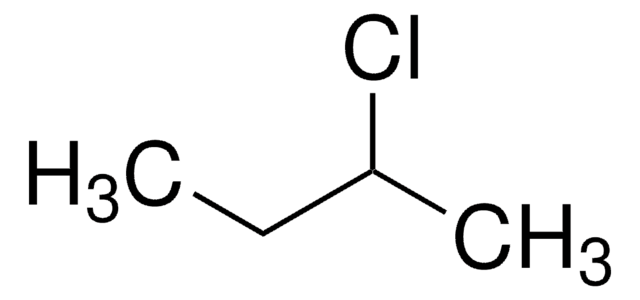79874
2-Chloro-1,3,5-trinitrobenzene
≥98.0% (HPLC)
Sinónimos:
2,4,6-Trinitrochlorobenzene
About This Item
Productos recomendados
Quality Level
assay
≥98.0% (HPLC)
form
lumps
functional group
chloro
nitro
SMILES string
[O-][N+](=O)c1cc(c(Cl)c(c1)[N+]([O-])=O)[N+]([O-])=O
InChI
1S/C6H2ClN3O6/c7-6-4(9(13)14)1-3(8(11)12)2-5(6)10(15)16/h1-2H
InChI key
HJRJRUMKQCMYDL-UHFFFAOYSA-N
Categorías relacionadas
Other Notes
signalword
Danger
Hazard Classifications
Acute Tox. 1 Dermal - Acute Tox. 2 Inhalation - Acute Tox. 2 Oral - Aquatic Acute 1 - Aquatic Chronic 1 - Flam. Sol. 1
supp_hazards
Storage Class
4.1B - Flammable solid hazardous materials
wgk_germany
WGK 2
flash_point_f
Not applicable
flash_point_c
Not applicable
ppe
Eyeshields, Faceshields, Gloves, type P3 (EN 143) respirator cartridges
Elija entre una de las versiones más recientes:
¿Ya tiene este producto?
Encuentre la documentación para los productos que ha comprado recientemente en la Biblioteca de documentos.
Nuestro equipo de científicos tiene experiencia en todas las áreas de investigación: Ciencias de la vida, Ciencia de los materiales, Síntesis química, Cromatografía, Analítica y muchas otras.
Póngase en contacto con el Servicio técnico